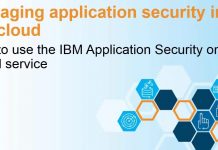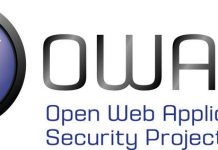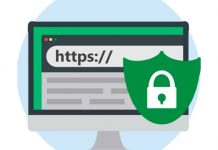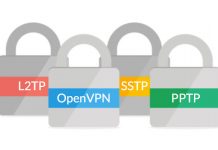Let’s take a look at five most popular pentesting tools like nmap, sqlmap, burpsuite, dirb and metasploit.
Nmap
Network Mapper is a free and open source utility for network discovery and security auditing. Many systems and network administrators also find it useful for tasks such as network inventory, managing service upgrade schedules, and monitoring host or service uptime.
Nmap uses raw IP packets in novel ways to determine what hosts are available on the network, what services (application name and version) those hosts are offering, what operating systems (and OS versions) they are running, what type of packet filters/firewalls are in use, and dozens of other characteristics.
It was designed to rapidly scan large networks, but works fine against single hosts. Nmap runs on all major computer operating systems, and official binary packages are available for Linux, Windows, and Mac OS X.
In addition to the classic command-line Nmap executable, the Nmap suite includes an advanced GUI and results viewer, a flexible data transfer, redirection, and debugging tool, a utility for comparing scan results, and a packet generation and response analysis tool.
Previously we described some basic nmap scanning techniques and now let’s find advantages of this tool.
- Flexible: Supports dozens of advanced techniques for mapping out networks filled with IP filters, firewalls, routers, and other obstacles. This includes many port scanning mechanisms (both TCP & UDP), OS detection, version detection, ping sweeps, and more. See the documentation page.
- Powerful: Nmap has been used to scan huge networks of literally hundreds of thousands of machines.
- Portable: Most operating systems are supported, including Linux, Microsoft Windows, FreeBSD, OpenBSD, Solaris, IRIX, Mac OS X, HP-UX, NetBSD, Sun OS, Amiga, and more.
- Easy: While Nmap offers a rich set of advanced features for power users, you can start out as simply as “nmap -v -A targethost”. Both traditional command line and graphical (GUI) versions are available to suit your preference. Binaries are available for those who do not wish to compile Nmap from source.
- Free: The primary goals of the Nmap Project is to help make the Internet a little more secure and to provide administrators/auditors/hackers with an advanced tool for exploring their networks. Nmap is available for free download, and also comes with full source code that you may modify and redistribute under the terms of the license.
- Well Documented: Significant effort has been put into comprehensive and up-to-date man pages, whitepapers, tutorials, and even a whole book! Find them in multiple languages here.
- Supported: While Nmap comes with no warranty, it is well supported by a vibrant community of developers and users. Most of this interaction occurs on the Nmap mailing lists. Most bug reports and questions should be sent to the nmap-dev list, but only after you read the guidelines. We recommend that all users subscribe to the low-traffic nmap-hackers announcement list. You can also find Nmap on Facebook and Twitter. For real-time chat, join the #nmap channel on Freenode or EFNet.
- Acclaimed: Nmap has won numerous awards, including “Information Security Product of the Year” by Linux Journal, Info World and Codetalker Digest. It has been featured in hundreds of magazine articles, several movies, dozens of books, and one comic book series. Visit the press page for further details.
- Popular: Thousands of people download Nmap every day, and it is included with many operating systems (Redhat Linux, Debian Linux, Gentoo, FreeBSD, OpenBSD, etc). It is among the top ten (out of 30,000) programs at the Freshmeat.Net repository. This is important because it lends Nmap its vibrant development and user support communities.
sqlmap
sqlmap is an open source penetration testing tool that automates the process of detecting and exploiting SQL injection flaws and taking over of database servers.
It comes with a powerful detection engine, many niche features for the ultimate penetration tester and a broad range of switches lasting from database fingerprinting, over data fetching from the database, to accessing the underlying file system and executing commands on the operating system via out-of-band connections.
List of some sqlmap features:
- Full support for MySQL, Oracle, PostgreSQL, Microsoft SQL Server, Microsoft Access, IBM DB2, SQLite, Firebird, Sybase and SAP MaxDB database management systems.
- Full support for six SQL injection techniques: boolean-based blind, time-based blind, error-based, UNION query, stacked queries and out-of-band.
- Support to directly connect to the database without passing via a SQL injection, by providing DBMS credentials, IP address, port and database name.
- Support to enumerate users, password hashes, privileges, roles, databases, tables and columns.
- Automatic recognition of password hash formats and support for cracking them using a dictionary-based attack.
- Support to dump database tables entirely, a range of entries or specific columns as per user’s choice. The user can also choose to dump only a range of characters from each column’s entry.
- Support to search for specific database names, specific tables across all databases or specific columns across all databases’ tables. This is useful, for instance, to identify tables containing custom application credentials where relevant columns’ names contain string like name and pass.
- Support to download and upload any file from the database server underlying file system when the database software is MySQL, PostgreSQL or Microsoft SQL Server.
- Support to execute arbitrary commands and retrieve their standard output on the database server underlying operating system when the database software is MySQL, PostgreSQL or Microsoft SQL Server.
- Support to establish an out-of-band stateful TCP connection between the attacker machine and the database server underlying operating system. This channel can be an interactive command prompt, a Meterpreter session or a graphical user interface (VNC) session as per user’s choice.
- Support for database process’ user privilege escalation via Metasploit’s Meterpreter getsystem command.
How to use sqlmap you can see in this demo:
BurpSuite
Burp Suite is an integrated platform for performing security testing of web applications. It is not a point-and-click tool, but is designed to be used by hands-on testers to support the testing process. With a little bit of effort, anyone can start using the core features of Burp to test the security of their applications.
Some of Burp’s more advanced features will take further learning and experience to master. All of this investment is hugely worth it – Burp’s user-driven workflow is by the far the most effective way to perform web security testing, and will take you way beyond the capabilities of any conventional point-and-click scanner.
Burp is intuitive and user-friendly, and the best way to start learning is by doing. These steps will get you started with running Burp and using its basic features. You can then read on deeper into the documentation to become more proficient in using this supremely powerful tool.
Burp Suite contains the following key components:
- An intercepting Proxy, which lets you inspect and modify traffic between your browser and the target application.
- An application-aware Spider, for crawling content and functionality.
- An advanced web application Scanner, for automating the detection of numerous types of vulnerability.
- An Intruder tool, for performing powerful customized attacks to find and exploit unusual vulnerabilities.
- A Repeater tool, for manipulating and resending individual requests.
- A Sequencer tool, for testing the randomness of session tokens.
- The ability to save your work and resume working later.
- Extensibility, allowing you to easily write your own plugins, to perform complex and highly customized tasks within Burp.
Some kind of burpsuite overview you can watch in this video:
Dirb
DIRB is a Web Content Scanner. It looks for existing (and/or hidden) Web Objects. It basically works by launching a dictionary based attack against a web server and analyzing the response.
DIRB comes with a set of preconfigured attack wordlists for easy usage but you can use your custom wordlists. Also DIRB sometimes can be used as a classic CGI scanner, but remember is a content scanner not a vulnerability scanner.
DIRB main purpose is to help in professional web application auditing. Specially in security related testing. It covers some holes not covered by classic web vulnerability scanners. DIRB looks for specific web objects that other generic CGI scanners can’t look for. It doesn’t search vulnerabilities nor does it look for web contents that can be vulnerables.
Tools included in Dirb scanner:
-
A web content scanner
-
html2dic – Generate a dictionary from HTML pages
- gendict – Generator for custom dictionaries
Dirb usage example:
Metasploit
Attackers are always developing new exploits and attack methods—Metasploit penetration testing software helps you use their own weapons against them. Utilizing an ever-growing database of exploits, you can safely simulate real-world attacks on your network to train your security team to spot and stop the real thing.
Benefits of using metasploit during penetration testing:
Before we jump into an example penetration test, we must know why we prefer Metasploit to manual exploitation techniques. Is this because of a hacker-like terminal that gives a pro look, or is there a different reason? Metasploit is a preferable choice when compared to traditional manual techniques because of certain factors that are discussed in the following sections.
One of the top reasons why one should go with Metasploit is because it is open source and actively developed. Various other highly paid tools exist for carrying out penetration testing. However, Metasploit allows its users to access its source code and add their custom modules. The Pro version of Metasploit is chargeable, but for the sake of learning, the community edition is mostly preferred.
How to use metasploit you can watch in video below:
Conclusion
Here we mostly used tools for web applications penetration testing except nmap and metasploit, they can be used for both network and applications penetration testing. Also not so long ago some useful plugins were developed for BurpSuite which helps you make assessment of servers by grabbing their banners and analyzing data with Vulners database.
All of those 5 tools are very popular among penetration testers, certified ethical hackers and something you “must have” for successful penetration tests execution, also they will make your life much easier.


























